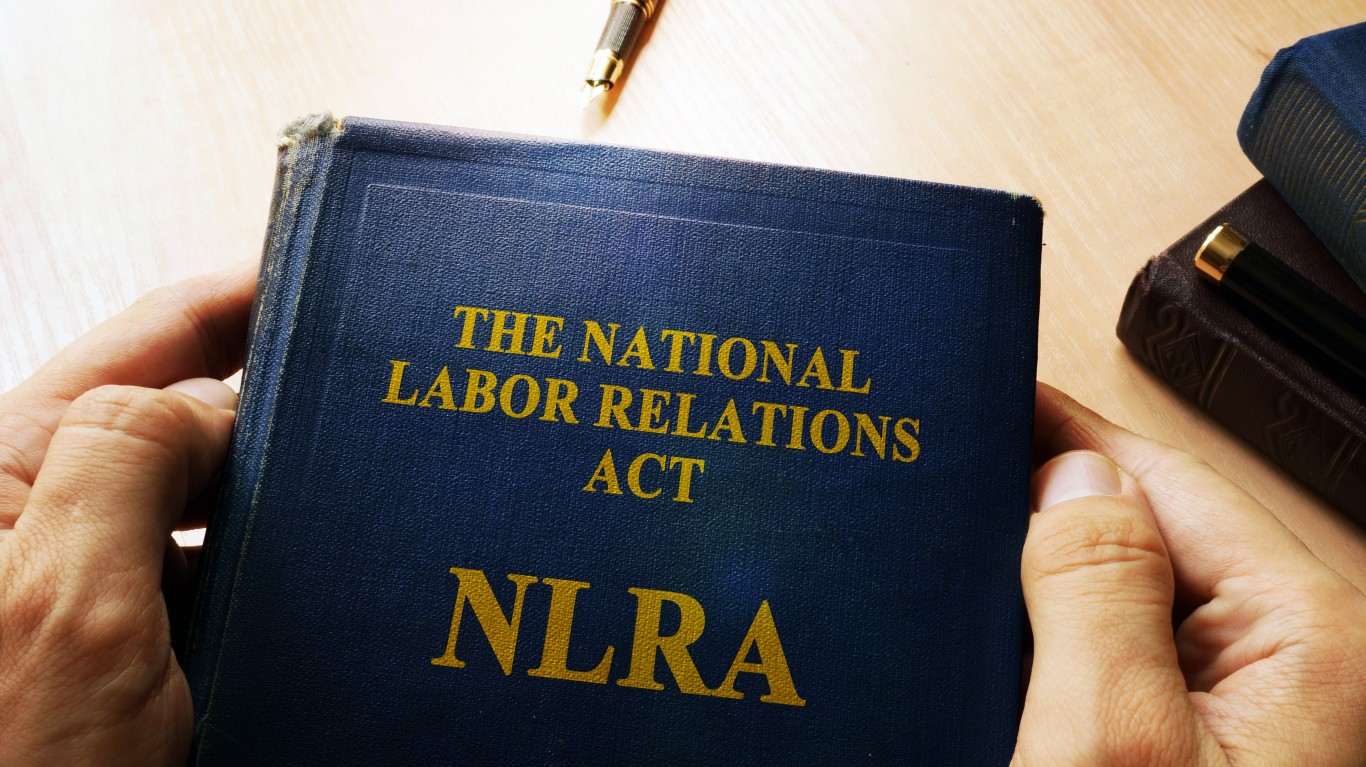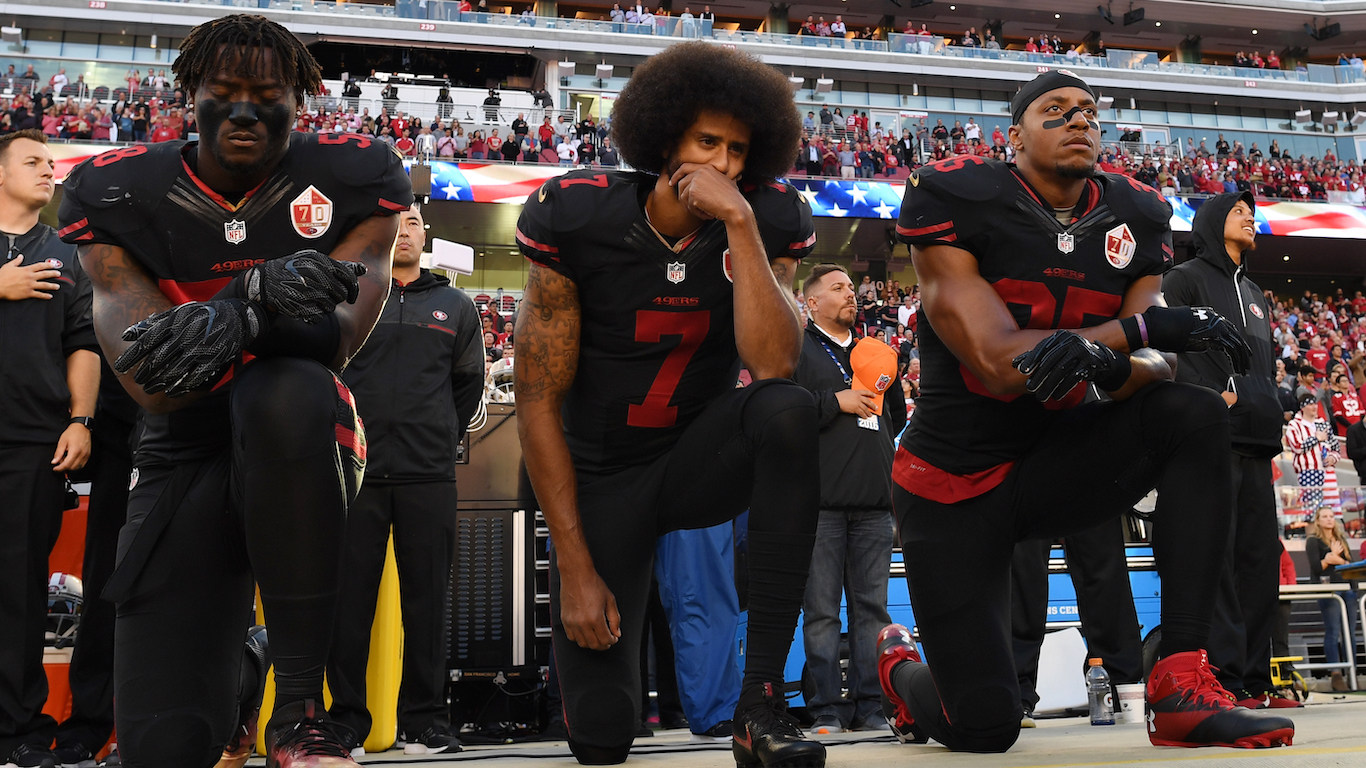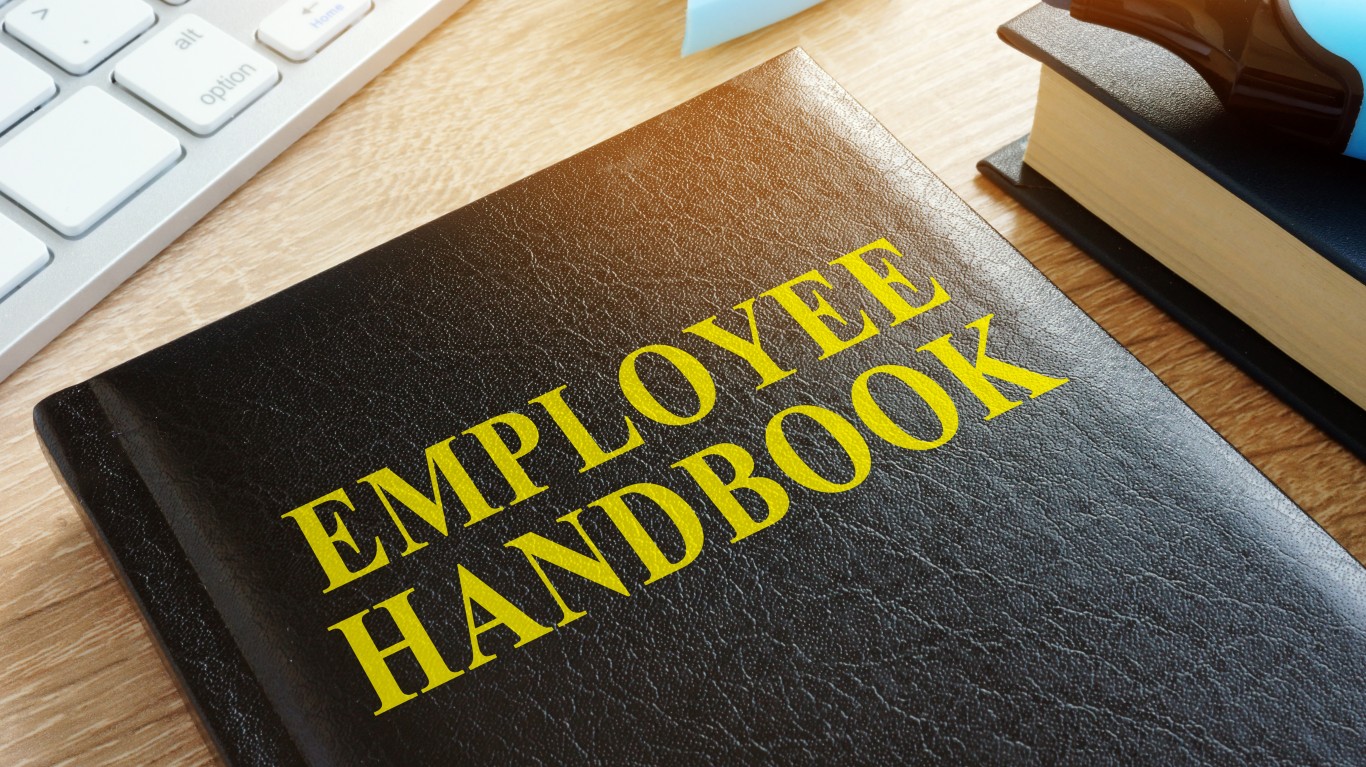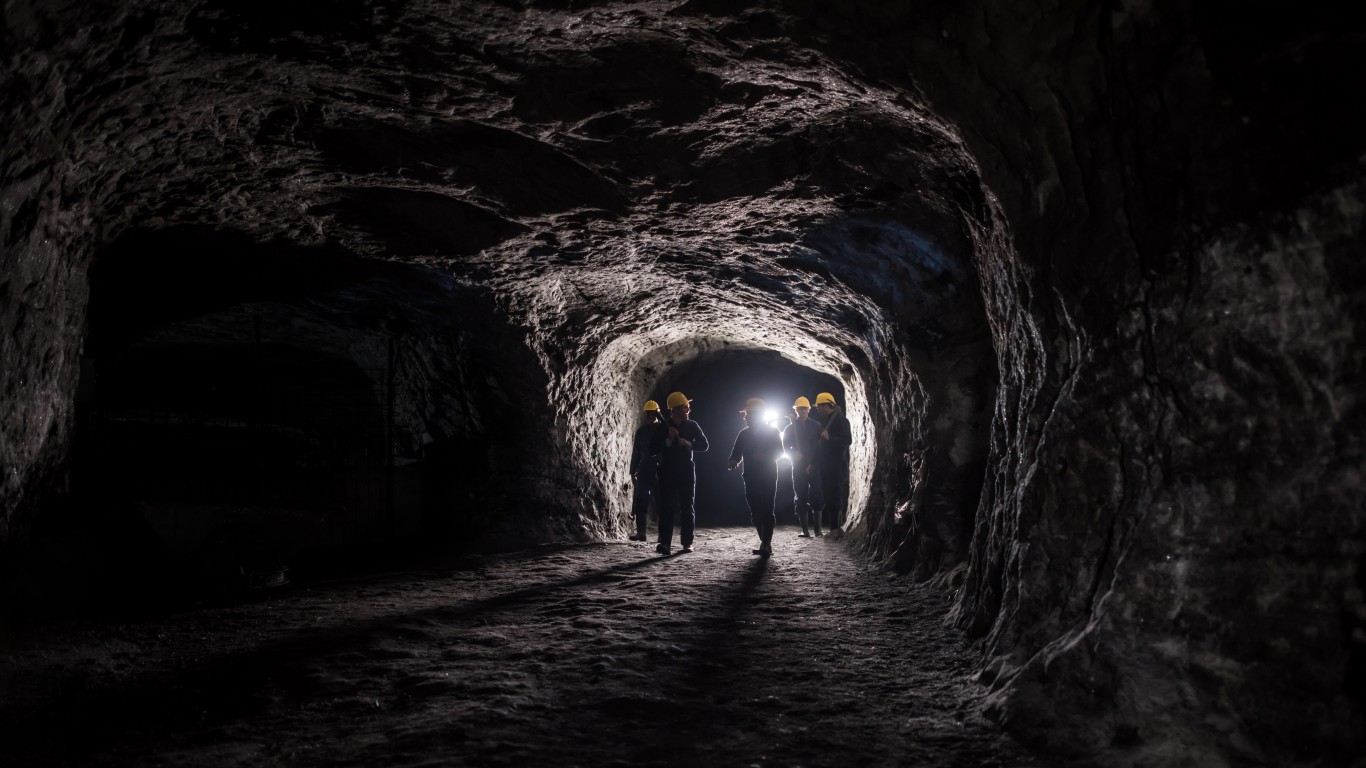Special Report
The Labor Laws Your Boss Doesn't Want You to Know About

Published:
Last Updated:

While they may not agree on much, both pro-unions and right-to-work advocates would agree that workers should have legal basic rights in the workplace. Most Americans agree workers should be paid at least the minimum wage. And if they work more than 40 hours a week, employees should be paid overtime. Most American workers share the expectation that unemployment insurance will be available if they lose their jobs.
Though many of these protection are well known, some are not well understood, and there are many more ways in which the law protects employees in the United States.
Employees know that they are protected from workplace health and safety problems. Perhaps less known are the special rules for nail salon workers. Similarly, worker’s compensation is an example of a baseline benefit to cover injuries incurred on the job. More in-depth protections are provided for miners, longshoremen, and construction workers among others. And workers, in general, also are aware of anti-discrimination protections, but they may not be aware of whistleblower protection regulations.
24/7 Wall St. reviewed labor laws catalogued by the Department of Labor, consulted news reports, and spoke with experts from the National Employment Law Project to identify some of the laws, rights, and protections employees in the United States are entitled to.
Rules governing employer-employee relationships are often viewed as attacks on business owners. However, these laws serve to resolve tensions between employers and employees, and declines in labor standards have arguably eroded working conditions for everybody.
In an interview with 24/7 Wall St, Catherine Ruckelshaus, general counsel with the National Employment Law Project, explained that the ongoing decline in unionization rates, for example, has resulted in not just lower labor standards, but also strife in the workplace.
“A union provides that sort of ongoing monitoring and managing of workplace questions and culture that can sometimes really help an employer,” she said. Human resource departments help provide some of these services, but as Ruckelshaus noted, “oftentimes HR departments are seen as being aligned with the employer, and so sometimes workers don’t trust them or they feel like it’s where problems go to die as opposed to helping them resolve.”
Approximately 20.1% of workers were members of unions in 1983 (the first year for which data is available), versus 10.5% today. According to Ruckelshaus, the shift away from traditionally unionized manufacturing jobs to often lower paid hospitality and service sector work has contributed to the decline of unions, which in turn has hurt labor standards. While unions continue to decline at the national level, some states remain union strongholds. Here are the states with the strongest and weakest unions.
Click here to see the labor laws your boss doesn’t want you to know about.

Discussing working conditions
Most employees have the right to talk about working conditions with their co-workers, according to provisions of The National Labor Relations Act (NLRA).
[in-text-ad]

Free speech at workplace
Former NFL quarterback Colin Kaepernick’s decision to kneel during the national anthem before a game sparked debate over the extent of worker rights to free speech in the workplace. In general, freedom of speech rights at the workplace are limited, and an employer can act against workers for what they say or write. If the worker’s speech, however, is about employee rights over collective bargaining, that speech is protected.

“Concerted activity”
Concerted activity is the National Labor Relations Board (NLRB) term for when two or more employees talk to each other about their workplace environment. Sharing wages, benefits, and starting petitions for better work hours examples of concerted activity. Employers are not allowed to retaliate against such activity, even if employees doing so are not part of a union.

Keeping copies of documents
You have the right to keep copies of documents you sign when you join a company. Workers are advised to retain copies of all documents they sign. This, however, is not a federal rule and some states may permit companies to not hand over documents.
[in-text-ad-2]

Check employee handbook.
Some parts of an employee handbook might contain illegal provisions. Such provisions may include sections specifying at-will employment policy, which might be illegal, even though most employees are at-will workers. At-will employees are non-union workers who can be dismissed by their employer for any reason and without warning. Other parts of employee handbooks that NLRB finds could contain illegal sections involve prohibitions against discussing wages and against saying derogatory remarks about the company.

Whistleblower shield
The Occupational Safety and Health Administration, as well as labor and public safety laws, shield so-called whistleblowers who expose violations of the law by their employers. Whistleblowers may be reinstated at their job and receive payment of back wages.
[in-text-ad]

Hostile workplace
A hostile working environment is only illegal if it is due to legally protected status such as race, age, sex, religion, or disability, and workers should complain. Otherwise, a hostile work environment in which harassment or bullying occurs is not necessarily illegal.

Re-employment for military personnel
Those who serve in the military have a right to be re-employed by the company where they were employed at the time they joined the service.

Protest protection
According to the NLRA, you have protection to raise objections about workplace conditions, but only if you are doing so on behalf of others as well as yourself. If you do so just for yourself, you aren’t protected.
[in-text-ad-2]

Employee Polygraph Protection Act
The Employee Polygraph Protection Act forbids most employers from using lie detectors on employees, though it allows employers to perform the test under certain circumstances, such as for prospective employees at federal agencies such as the FBI.

Family and Medical Leave Act
The Family and Medical Leave Act, which passed in 1993, mandates that employers with 50 or more workers allow for up to 12 weeks of unpaid and job-protected leave of absence to eligible employees for the birth or adoption of a child. It also provides leave time for the serious illness of an employee, a spouse, child, or parent.
[in-text-ad]

Keeping social media contacts
People such as journalists can develop a social media following in the course of doing their job. Those contacts might be of monetary value to an employer if and when an employee decides to change jobs and they may be considered part of severance package.

Independent contractor status
To evade paying its portion of employment taxes, a company may try to classify workers as contractors, a classification a worker might not approve of.

Protecting farm workers
The Migrant and Seasonal Agricultural Worker Protection Act shields migrant and seasonal agricultural workers, historically among the most exploited in the United States, by “creating wage, housing, transportation, and recordkeeping standards. Farm labor contractors also are required to register with the U.S. Department of Labor.”
[in-text-ad-2]

Mine Act
Miners perform some of the most dangerous jobs in America, and they are protected by the Federal Mine Safety and Health Act of 1977, also known as the Mine Act. This legislation makes mine operators responsible for the safety of miners; sets safety and health standards as well as training requirements; and outlines penalties for violations.

Construction rules
Construction workers are protected by Executive Order 11246 and the anti-kickback provision of the Copeland Act. The executive order requires federal construction contractors and subcontractors, and those who assist them, to provide equal employment opportunities. Under the anti-kickback section of the Copeland Act, workers are protected from threats or dismissal from a job from anyone who demands that the worker surrender compensation.
[in-text-ad]

Protecting longshoremen
The Longshore and Harbor Workers’ Compensation Act, passed in 1927, is intended to help workers who were injured, or the families of workers who were killed, during maritime-related employment by providing workers’ compensation benefits.

Transit workers rights
The rights of mass transit employees are protected under the Federal Transit law, which was updated in 1978. The law includes preserving rights and benefits under collective bargaining agreements.

Plant closing warning
The federal Worker Adjustment and Retraining Act (WARN), passed in 1989, requires companies to provide employees with 60 days written notice of job reductions related to layoffs or plant closings. The act was passed to enable workers time to adjust to possible downsizing and seek other employment.
[in-text-ad-2]

Garment industry worker rights
Up until the tragic Triangle Shirtwaist fire in 1911 in New York City, which prompted a series of protection laws, garment workers have toiled under terrible conditions. Employees of garment shops must be paid at least the federal minimum wage for all hours worked, whether they are paid by the hour or by piece. Time spent training or doing repairs is also considered paid time.

Break time for nursing mothers
As women began populating the workplace in greater numbers, regulations to make accommodations for new mothers who are nursing their newborns were passed. The Fair Labor Standards Act (FLSA) mandates that employers to provide time and an area for a nursing mom to express breast milk for her baby for one year after her child’s birth.
[in-text-ad]

Health-care worker rights
With home health care growing dramatically, the Wage and Hour Division of the Department of Labor requires payment for travel time for workers going to and from the work site and work-related meetings and training.

Rights for H-2B workers
Employers of H-2B workers — foreign nationals working temporarily in nonagricultural or nonprofessional jobs in the United States — may not compel them to pay for any expenses related to obtaining the labor certification. Such expenses include petition filing fee, the employer’s attorneys’ fees or agent fees, or expenses pertaining to recruitment.

Rights for H-1B workers
H-1B workers — those who have specialized skills gained through graduate and undergraduate studies — must be paid the same as those workers with similar experience and receive the same fringe benefits as American workers. Employers may not require these workers to pay for expenses related to obtaining the labor certification, petition filing fees, or employer’s attorneys’ fees or agent fees.

Nail salon worker protections
The plight of nail salon workers, mostly from Asian countries, has received media attention in recent years. Nail salon products that contain hazardous chemicals must provide warning and precautionary statements, according to OSHA. Salons also must provide safety data sheets to workers.
[in-text-ad-2]

Forest worker rights
Employers of those who work in the forestry sector, among the most dangerous areas to work, are allowed to deduct from workers’ pay the costs of providing the workers with food and housing. An employer is not allowed, however, to take away pay for items such as tools or equipment required to perform the job, if the deductions reduce pay below minimum wage.

Rights for workers with disabilities
An employer with a certain certificate from the Department of Labor may be permitted to pay a worker less than minimum age if an employee’s disability reduces his or her ability to do the job. Employers are also required to tell each worker in person and in writing that he or she will earn less than the minimum wage.

Workplace safety
Federal law entitles workers to a safe workplace. An employer must provide a workplace without health and safety hazards. Among other workplace safety requirements mandated by OSHA are that workers be trained in a language they understand; that the machines they operate are safe; that employers provide safety gear; and that workers are shielded from toxic chemicals.
[in-text-ad]

Shield from retaliation
It is illegal for an employer to fire, demote, transfer, or act in a retaliatory manner against workers for exercising their rights.

Collecting overtime pay
A business may try to avoid paying overtime in various ways, such as changing a worker’s classification and saying he or she is a salaried or exempt employee. Other employer strategies may include having employees work off the clock and requiring workers to perform off-hours work. Workers have the right to protest these illegal tactics.
Credit card companies are at war, handing out free rewards and benefits to win the best customers. A good cash back card can be worth thousands of dollars a year in free money, not to mention other perks like travel, insurance, and access to fancy lounges. See our top picks for the best credit cards today. You won’t want to miss some of these offers.
Flywheel Publishing has partnered with CardRatings for our coverage of credit card products. Flywheel Publishing and CardRatings may receive a commission from card issuers.
Thank you for reading! Have some feedback for us?
Contact the 24/7 Wall St. editorial team.